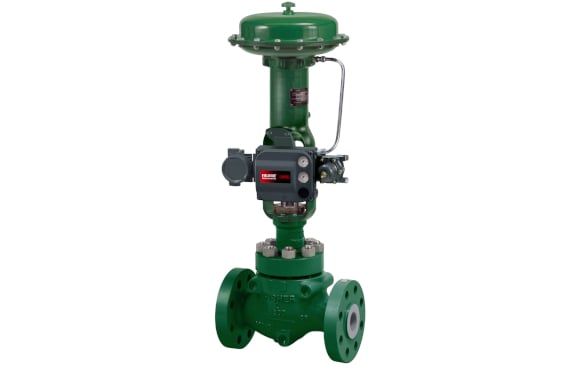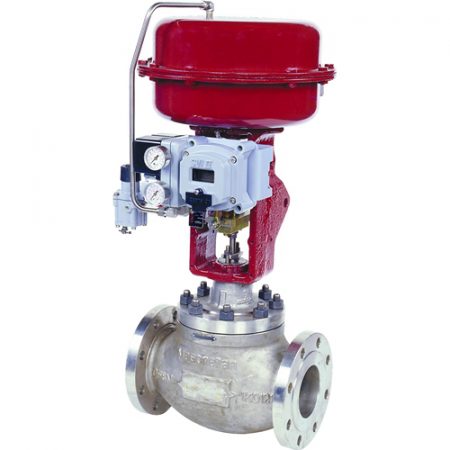Maximizing System Control with High-Performance Control Valves
Maximizing System Control with High-Performance Control Valves
Blog Article
Maximize Energy Cost Savings and Comfort With Advanced Building Automation Controls
In the world of contemporary design and facility management, the combination of advanced structure automation regulates stands as a critical innovation. By taking advantage of the power of automation, structures can adapt, respond, and advance in ways that were as soon as inconceivable.
Power Performance Conveniences
Power efficiency benefits can significantly reduce energy intake and operational expenses in structures. By executing energy-efficient practices and innovations, building proprietors and operators can attain significant savings while additionally adding to ecological sustainability. Among the primary advantages of improving energy performance in buildings is the reduction of utility costs. Energy-efficient systems, such as sophisticated building automation controls, can optimize the use of sources like cooling, lighting, and home heating, causing lower energy expenditures with time.
Moreover, improved energy effectiveness can lengthen the lifespan of structure tools and systems. By running much more successfully, HVAC systems, lighting fixtures, and various other structure parts experience much less damage, causing lowered maintenance and substitute prices. Additionally, energy-efficient structures usually regulate higher property worths and rental rates, giving long-term monetary benefits to proprietors.
In addition, energy performance can improve occupant comfort and productivity. Correctly controlled indoor environments with optimum lighting and thermal problems create a more helpful and pleasant work area, leading to boosted staff member contentment and efficiency. Overall, the power effectiveness benefits connected with advanced structure automation controls are diverse, incorporating cost savings, ecological stewardship, and owner well-being.
Improved Convenience Control
Enhancing convenience control in structure atmospheres needs an advanced integration of sophisticated automation systems for optimum resident well-being. By using sophisticated structure automation controls, centers can customize the interior setting to meet the certain needs and preferences of passengers. control valves.
By incorporating these innovative controls, structures can not only boost convenience however likewise enhance energy performance by enhancing system operations based on actual occupancy and use patterns. Inevitably, prioritizing resident comfort via advanced automation systems leads to a much more pleasurable and much healthier indoor environment.
Functional Efficiency Improvements

In addition, the implementation of real-time monitoring and analytics tools allows building operators to identify power inefficiencies and operational anomalies immediately. By continually keeping track of power usage patterns and system efficiency metrics, modifications can be made in real-time to enhance power usage and make sure peak operational effectiveness. control valves. In addition, incorporating demand feedback methods right into building automation controls can even more enhance functional effectiveness by dynamically readjusting power use based on grid problems and rates signals
Indoor Environment Optimization
Effective indoor environment optimization is an essential aspect of structure automation controls, ensuring passengers' comfort and health while taking full advantage of energy savings. By using advanced sensing units and controls, building automation systems can continually readjust and keep track of temperature level, humidity degrees, air top quality, and air flow to produce an optimal indoor atmosphere. Keeping comfortable and regular conditions not i loved this just enhances owner complete satisfaction right here but likewise enhances efficiency and total wellness.
Interior environment optimization likewise plays a vital role in energy effectiveness. By fine-tuning home heating, air flow, and cooling systems based upon real-time information and occupancy patterns, constructing automation controls can dramatically reduce power intake - control valves. For example, implementing techniques such as demand-controlled ventilation and thermal zoning can assist minimize power waste while making certain that each location of the building gets the essential conditioning.

Sustainable Setting Production
Building automation controls not only optimize interior climate conditions for energy effectiveness and resident convenience however also lay the foundation for developing a lasting setting via strategic monitoring of sources and systems. By incorporating sophisticated structure automation innovations, such as sensing units, actuators, and smart software application, facilities can change and keep track of power use in real-time to lessen waste and lower their carbon footprint. These systems allow predictive maintenance, recognizing possible issues before they intensify and enhancing devices performance to improve durability and effectiveness.
Additionally, sustainable atmosphere creation prolongs beyond power management to encompass water conservation, waste reduction, and interior air check my reference high quality improvement. Structure automation controls can control water use, identify leaks, and make certain appropriate garbage disposal methods, adding to total sustainability efforts. In addition, by controlling and keeping track of ventilation and filtration systems, these innovations improve owner health and productivity while reducing power intake associated with heating and cooling operations.
Conclusion
Finally, advanced structure automation controls deal significant advantages in terms of power financial savings, comfort control, functional performance, indoor climate optimization, and developing a sustainable atmosphere. By applying these controls, buildings can accomplish optimal performance while decreasing power usage and boosting occupant comfort. It is evident that using sophisticated automation innovation is vital in boosting structure performance and developing an extra lasting future.
Power effectiveness benefits can considerably lower energy consumption and operational costs in buildings. Overall, the energy performance benefits linked with innovative building automation controls are multifaceted, incorporating price savings, environmental stewardship, and occupant well-being.
Additionally, integrating need reaction methods right into building automation controls can further enhance operational efficiency by dynamically changing energy use based on grid conditions and rates signals.
Structure automation controls not only maximize interior environment conditions for power performance and occupant comfort yet likewise lay the structure for producing a lasting setting with strategic management of systems and resources.In final thought, progressed structure automation regulates offer substantial advantages in terms of energy savings, convenience control, operational efficiency, indoor environment optimization, and producing a lasting setting.
Report this page